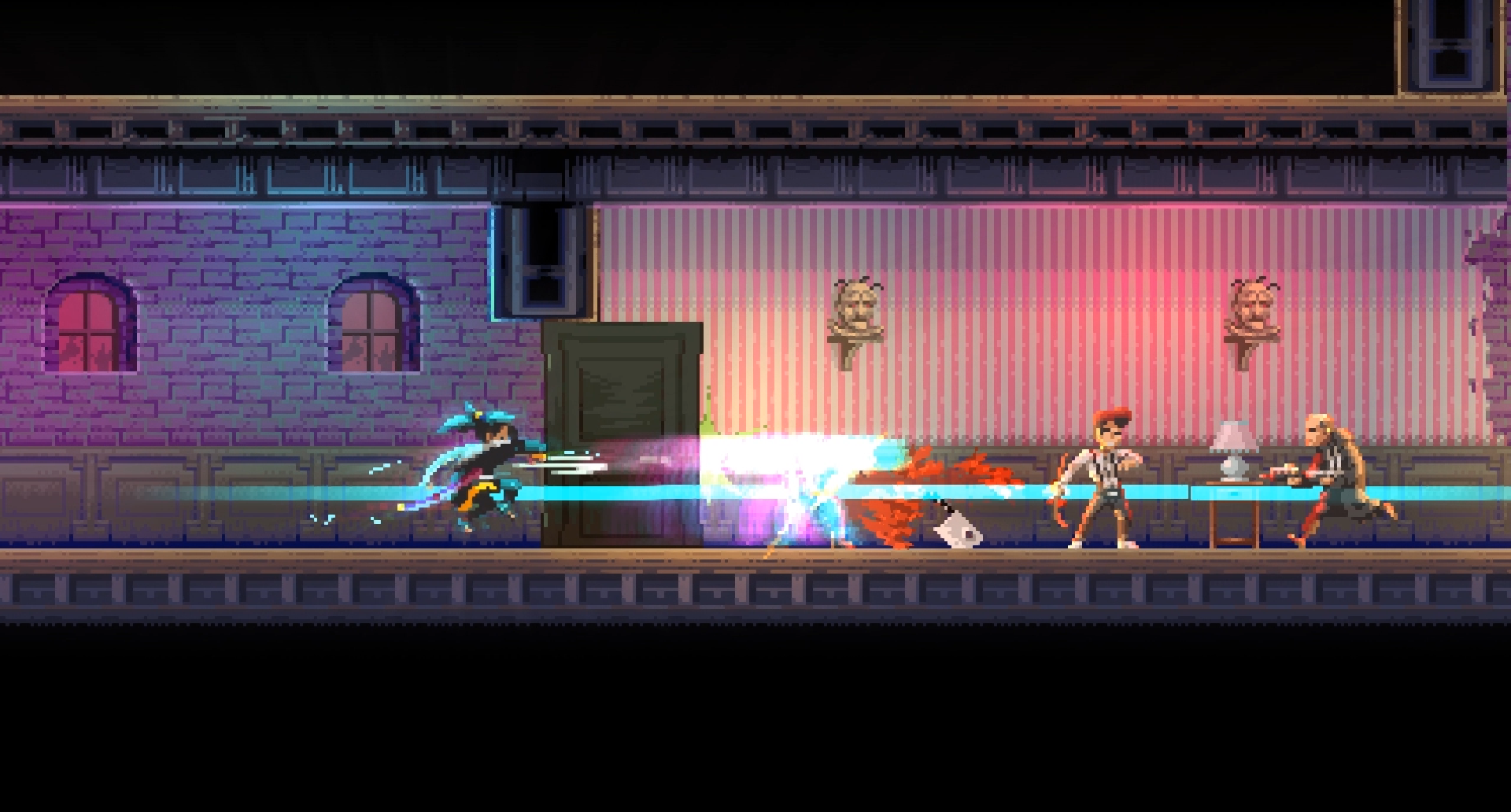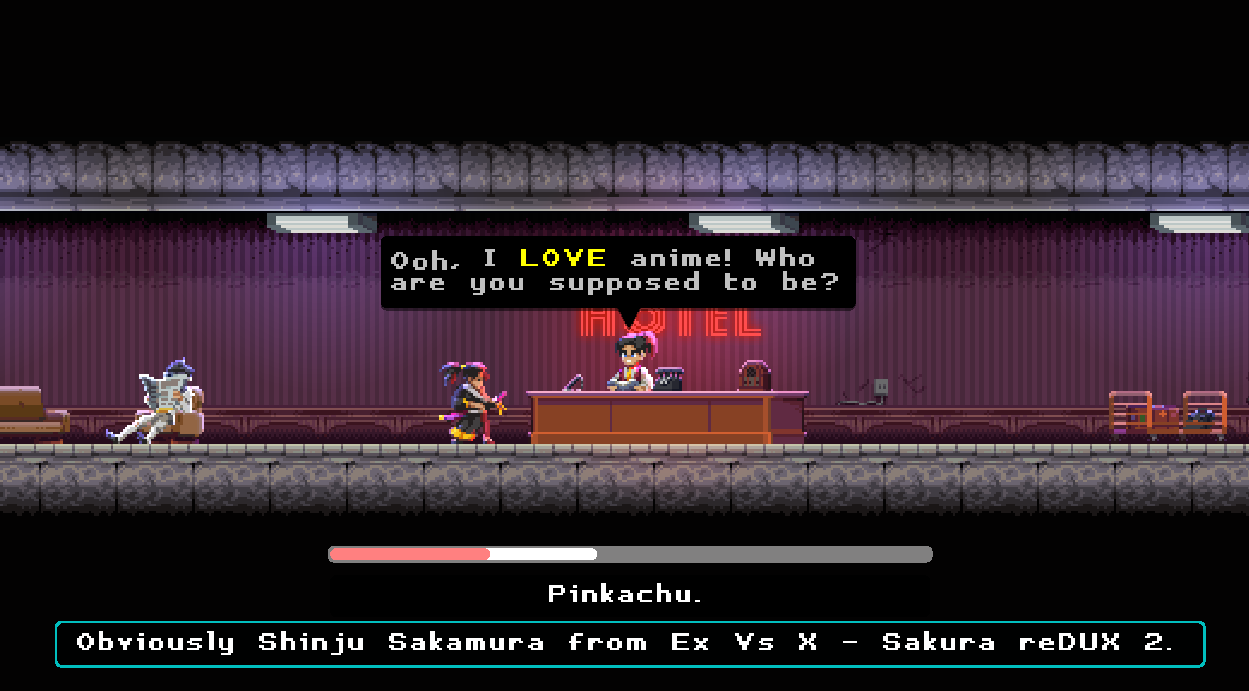Katana ZERO, a time-warping samurai escapade, boasts stunning visuals, music, mechanics, and writing. It's one of 2019's best games thus far.
Katana ZERO is, at this point in 2019, one of the best games of the year. There's so much to like about it - its sleekness, its bizarre plot, its beguiling soundtrack, the fluidity of its slashing-around - and so very little to take issue with. Were Katana ZERO to have a fault it would be its relatively short runtime. But what a wonderful problem, when a game's only flaw is that there isn't enough of it in the world.
In Katana ZERO, players assume the role of a side-scrolling samurai who takes on a series of assassination missions. Levels consist of interconnected rooms, and all of the enemies within each room must be defeated to proceed to the next. The mechanics here are pared-down to mostly running, jumping, rolling to dodge, and slashing. But the samurai also has the ability to alter time; holding down a certain button slows everything, including you, to a crawl, allowing you to deflect bullets back at shooters and otherwise get out of tricky situations. The slowdown expends a meter that passively refills over time, encouraging decisive and strategic use of the ability.
One of the game's defining features is the samurai's vulnerability. If hit by an enemy or an environmental hazard even once, you're rewinded back to the beginning of the room you're in. Thankfully, this rarely, if ever, gets tedious - rooms are excellently spaced out and paced, keeping progress from lagging too much at a time. And once you do successfully clear a room, you can watch a replay of your passage through it. These replays are skippable, but it's fun once in a while to assess from a critical remove how deftly (or clumsily) you outmaneuvered your enemies. Plus, slowed-down actions are played back at regular speed, making your feats seem all the more impressive.
Katana ZERO's plot is as satisfying as its gameplay. The game is set in an unspecified dystopia in the aftermath of a conflict reminiscent, in its divisiveness and immorality, of the Vietnam War. The samurai is a veteran of that war and his journey explores themes of drug abuse, memory, trauma, and, expectedly, life and death. The writing is mostly strong, and a time-sensitive dialogue system allows players to select their responses and interrupt their conversation partners, the latter being an absorbing touch that doesn't seem to impact the overall storyline all that much.
Katana ZERO is a remarkably stylish, cohesive package. The game's DNA is filmic - it evokes Drive, Blade Runner, John Wick, Baby Driver, and more, but at no point do its inspirations overpower its distinctiveness. Its music is crucial to its success. Dreamier segments - literal dreams as well as hallucinations and other not-entirely-coherent images - are accompanied by lovely, floaty instrumentals; these moments contrast with the equally compelling electronic soundtrack that propels action sequences.
At the risk of coming across as too enthusiastic, it's worth being abundantly clear about how impressive Katana ZERO's execution is. The game refuses to include a feature or element without handling it expertly. Even the seemingly obligatory vehicle-riding and stealth portions, mechanical deviations that so regularly drag down otherwise great games, are captivating.
Katana ZERO ends - perhaps a bit too quickly - by all but promising an eventual sequel. And the hint that there's more to come elicits excitement bordering on giddiness. As big-budget games have increasingly embraced bloat and the overstuffing of content, it's refreshing to play a small, tight title brimming with confidence in its style and design. Katana ZERO is just that: a veritable wonder.
Katana ZERO is out now on Nintendo Switch and PC. Screen Rant was provided with a Switch download code for the purposes of this review.



